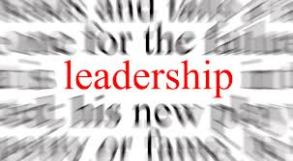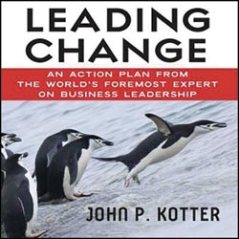
Amazon.com, Inc.
Research Project
Over the past decade many consumers have compared Amazon.com, Inc. to the conglomerate corporation Wal-Mart. As electronic commerce becomes the isolated way people get periodicals, Amazon has made its stake and is not going to vanish anytime in the near future. Amazon.com, Inc. (NASDAQ: AMZN) is an American multinational electronic commerce company with headquarters in Seattle, Washington. It is the world’s largest online retailer and provider of all things electronic. The company also produces consumer electronics – notably the Amazon Kindle e-book reader, and is a major provider of cloud computing services.
Background and History:
Jeff Bezos incorporated the company (as Cadabra) in July 1994, and the site went online as amazon.com in 1995. The company was renamed after the Amazon River, one of the largest rivers in the world, which in turn was named after Amazons, the legendary nation of female warriors in Greek mythology. Amazon.com started as an online bookstore, but soon diversified, selling DVDs, CDs, MP3 downloads, software, video games, electronics, apparel, furniture, food, toys, and jewelry. The initial target markets were young, innovative students and customers with a passion for books. While the largest brick-and-mortar bookstores and mail-order catalogs might offer several hundred-thousand titles, an online bookstore could definitely offer much more at a fraction of the price. Bezos was a visionary at heart, hoping to achieve success before the website even launched. Amazon’s logotype is an arrow leading from A to Z, representing customer satisfaction as it forms a smile. A marketing goal Amazon had was to have every product in the alphabet, in which stands as an attainable goal that Amazon has surpassed. The website is represented in several languages, such as, English, French, German, Spanish, Italian, Japanese, Chinese and Portuguese.
Business Plan and Organizational Structure:
Amazon’s first business plan was bizarre and many business analyst thought it soon too, would be a complete failure. The company did not expect to gain a profit for the initial four to five years it began in the public sector. Its slow and steady growth aggravated stockholder, and many complained that the company was not reaching profitability fast enough. When the Dot.Com era came to a bust, and many e-companies went out of business, Amazon persevered, and finally turned its first profit in the fourth quarter of 2001: $5 million or 1¢ per share, on revenues of more than $1 billion. The profit, although it was modest, served to demonstrate that the business model could be profitable. Bloomberg Business week now describes how businesses need to model their life cycles, “Shorter business life cycles require a new sort of management discipline capable of leading an organization through an ongoing process of transformation and renewal. To thrive in today’s marketplace, to be built to last, every business now must be built to transform.” Amazon survived the dot-com bust because it had a viable and innovative business model built around a market-changing customer value proposition and a radical profit formula, which upended the staid book industry. Then it quickly expanded beyond books to include all sorts of easily shippable consumer goods, growing from its core into near adjacencies. What sets aside Amazon from the rest of the E-Commerce businesses is the way it didn’t have a lot of emphasis on revenues. When Amazon allowed third-party buyer and seller relationships, it allowed people to be their own entrepreneurs. The competitive advantage they used by publicly sharing their business model with competitors was a genius move on Amazon’s home front. Many companies decided, “if you can’t beat them, join them”. As in the case of Borders Bookstore who joined forces with Amazon, but later the partnership didn’t work out. In the late 2000’s, Borders Bookstore Corporation had filed for bankruptcy. After initially reaching profit gains, Amazon decided again to restructure its business model. The new format of the interactive, user-friendly website made it popular daily hit for many web browsers. Amazon kept going. In late 2007, it set up Lab126, whose first product, the Kindle e-book reader, came to market wrapped in a business model not only foreign to Amazon’s DNA but also potentially disruptive to the entire publishing industry. The introduction of the Kindle electronic reader caused many small, family-operated bookstores to close their doors after many years in business.
Operational Inefficiencies & Efficiencies:
To launch this high-margin, product-based offering, Amazon had to become an original equipment manufacturer (OEM). Like the digital giant Apple, many customers with ITunes have to exclusively use the rights and royalties’ deemed by Apple. The structural design of Amazon has many customers flocking to new and improved subsidiaries’ of the expanding businesses that encompass the organizational model. “Identifying value begins by thinking of an important undiscovered or underserved job that customers want done and then coming up with a well-defined value proposition to address that job, however foreign to your current offerings that may be. “If you want to continuously revitalize the service that you offer to your customers, you cannot stop at what you are good at,” says CEO Jeff Bezos. “You have to ask what your customers need and want, and then, no matter how hard it is, you better get good at those things.” With a well-defined customer value proposition serving a focused, well-articulated job, business leaders and project teams can work together to design the appropriate profit formulas, key resources, and key processes the company needs to thrive”(Johnson, 2010). Business model innovation thrives in cultures of inquiry, environments in which new value propositions, new ways to turn a profit, and ideas for new business models are met with interest and encouragement. The Amazon.com Inc. is studied at the world’s top Business Schools as one of the best Business Models for growth and development. The biggest competitor and as some business expertise say “frenemies” Wal-Mart and Amazon are the battle of the budget line. “Wal-Mart pushed everyone in retail toward the world of massive stores and products in bulk, toward economies of scale and full truck loads,” she said. “But those efficiencies won’t necessarily work in a direct-to-consumer environment like e-commerce, so everyone is testing how they can manage the cost of transporting products along the last mile to the consumer”, as stated by Michael Kanellos( Forbes, 2012). Many former Walk-Mart executives have now since moved on and are currently working with Amazon.com sharing business concepts and share secrets. However, Wal-Mart won a Federal settlement from Amazon.com in 1998, that doesn’t change the fact insider information, was leaked and dishonesty helped skyrocket the Amazon brand. At the time, Wal-Mart issued this statement: “The purpose of the lawsuit is to bring an immediate stop to what appears to be a wholesale raiding of its proprietary and highly confidential information systems by Amazon.com and others through the use of former Wal-Mart associates.”
Proposal for the Future of Amazon.com, Inc:
Is Amazon the new Evil Empire? As once the title held by retail-store giant Wal-Mart. In December 2011, right at the peak of holiday shopping Amazon introduced an incentive program for its loyal customers who fired up Amazon’s Price Check app at a bricks-and-mortar store could scan an item and submit the price the shop was charging. More often than not, the app will reply that it can be had at a cheaper price. However, on Dec. 10 Amazon made things interesting by offering customers an additional 5% off (up to $5) on up to three qualifying items. In other words, Amazon was providing a financial incentive to folks to discover how out-of-touch retail pricing can be at some stores (Aristotle, Munarriz, 2011). Many local and state officials are lobbying to begin to make Amazon and its associates pay sales taxes in designated areas. Now that Amazon controls the end-to-end relationship between suppliers of goods stacked in its warehouses and consumers of those goods using its devices, Amazon’s next opportunity is to eliminate anyone who stands as a bottleneck between the two affiliations. The operational advantage is well-planned and hopefully well executed by the upper-management at Amazon.com Inc. Instead, Amazon produces an inexpensive, subsidized flagship tablet or tablets in those markets where it’s already strong. Then, depending on the success of that launch, it could partner with other companies that offer Amazon-powered products tailored to different regions or with very clear differences in form factor, features and price.
The future is still very bright for Amazon, may analyst believe it must remain user-friendly and have strong relationships with its employees to maintain a good standing in the public eye. Wal-Mart did the complete opposite, treating its most valuable asset, human capital, like week-old produce and losing sight of a structured work environment. As we fast approach another holiday season, Amazon.com Inc. will sure not disappoint its loyal customers anytime in the near future. In addition to Amazon’s great success, Jeff Bezos, Amazon’s CEO was named Fortune Magazine’s businessperson of 2012.
References:
Kanellos,M. (2012, April 25). Forbes Magazine. Retrieved from
Munarriz, R.A. (2011, December 19).AOL.Original. Retrieved from
http://www.dailyfinance.com/2011/12/19/is-amazon-the-new-evil-empire-sense
Welch, D. (2012, March 29). Electronic format. Bloomberg businessweek.
Retrieved from http://www.bloombergbusinessweek.com/whywal-martisworriedaboutAmazon.
Additional Information from:







 When people in organizations think of success, they sometimes forget that the their failures are what catapults their achievements. I have sometimes wondered “what if” certain things didn’t happen would it make difference of the final outcome of that situation. Leadership is what many people want to achieve, but the road to get there can be extremely bumpy at times.
When people in organizations think of success, they sometimes forget that the their failures are what catapults their achievements. I have sometimes wondered “what if” certain things didn’t happen would it make difference of the final outcome of that situation. Leadership is what many people want to achieve, but the road to get there can be extremely bumpy at times.